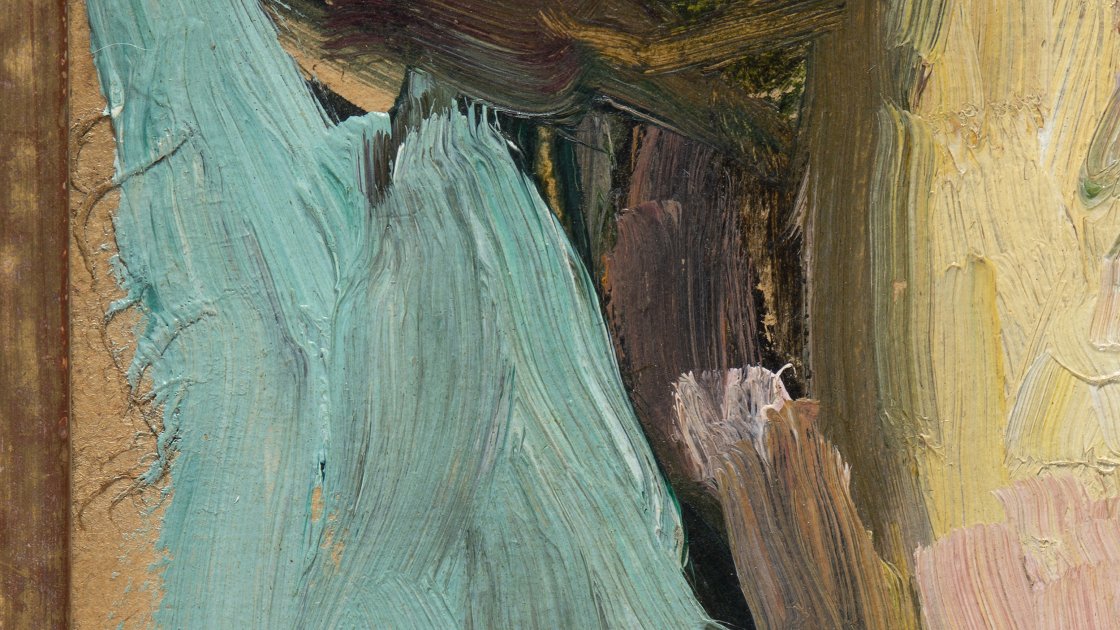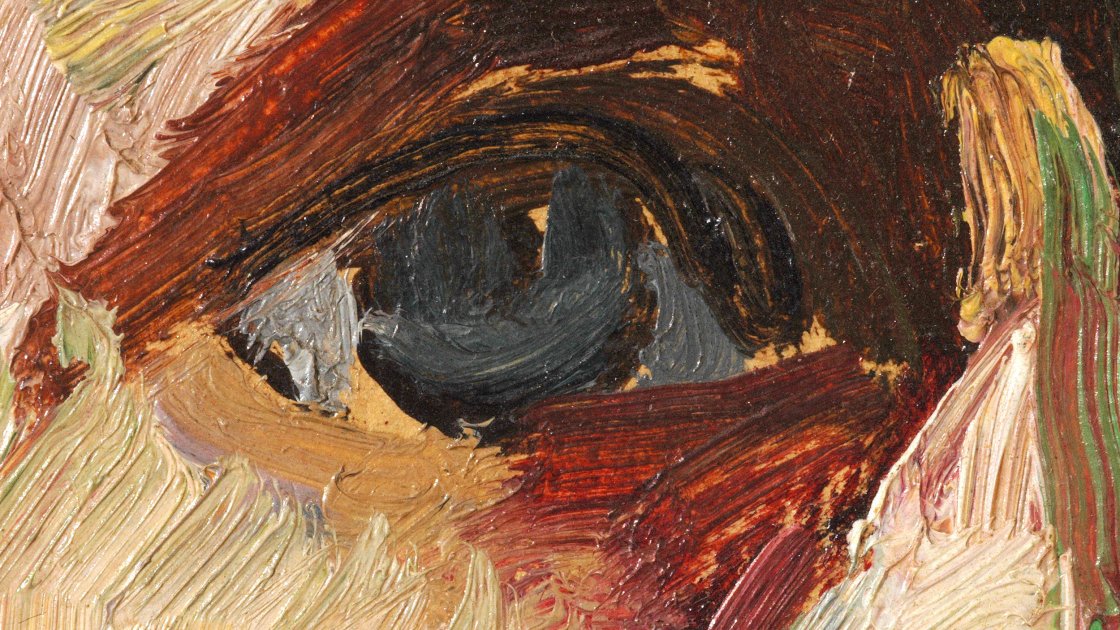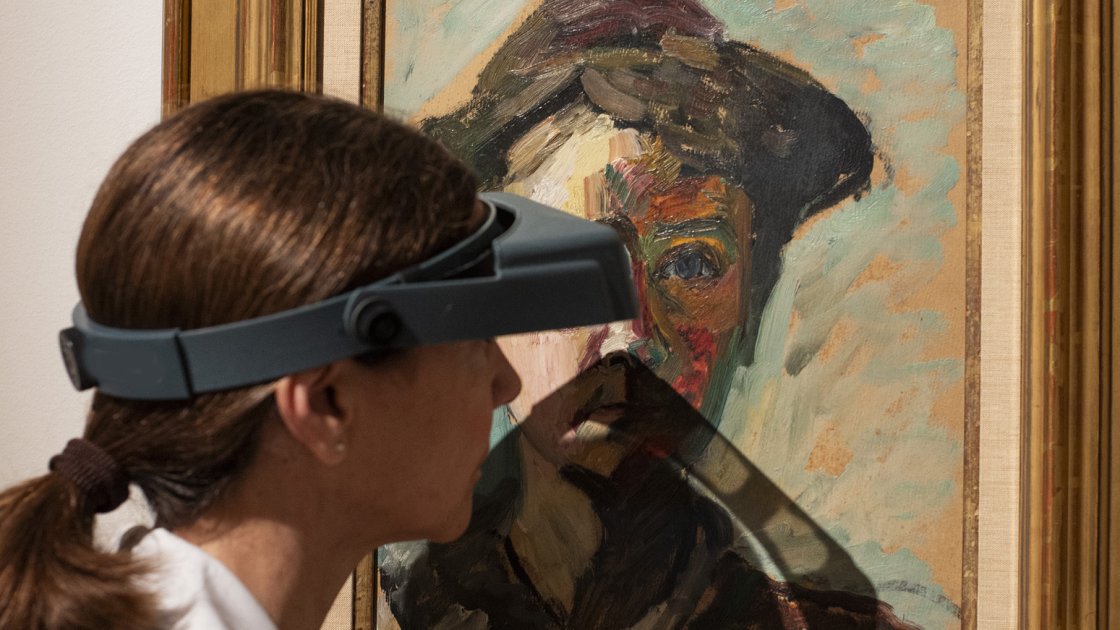Technical study
In connection with the Gabriele Münter retrospective at the Museo Nacional Thyssen-Bornemisza, the department of conservation/ restoration decided to study the works by this artist in the collection to learn more about her technique.
In the Self-Portrait executed around 1909–10, the artist depicted herself using vibrant lines and thick strokes of colour that infuse the composition with great energy. Münter drew the outlines in quite broad black strokes, which she then painted over.

The Expressionist painter
The tone of the cardboard shows through the unevenly applied paint in many areas. This is an essential device for intensifying the luminosity of the colours, creating a visual effect that emphasises the vigour of the brushstrokes and the emotion the artist seeks to convey.
To create the planes of the painting, Münter employed loose, expressive brushstrokes that transmit movement and depth. She used her brush to outline the forms decisively and swiftly. Through these strokes she established a creative process, making her paintings an intense expression of her artistic vision and her connection with the world around her.
Visible on the back of the picture is a sketch in black depicting a face with eyes, the line of the nose and the contour of the right side. This sketch is repeated on the front of the painting. Münter used the same type of stroke in both drawings, replicating the forms and proportions to create an identical design on both sides of the support.


Overlapping both sides
We made a tracing of the drawing on the reverse and, on positioning it over the face of the self-portrait painted in oils, found it to be an exact match. This suggests that the artist may have used tracing to create her self-portrait.
It was also striking to find that the drawing is located almost in the same position on both the front and back. We therefore measured the distances indicating how the drawing is laid out on the support, taking the left pupil of the face as a reference. The results were very similar. The match between both sides in terms of the drawing itself and its placement suggests that the artist had a very clear idea of how and where she wished to portray herself on the support.



Analysis of materials
The painting is executed in oil on a cardboard support. It is interesting to note Münter's handling of the cardboard, as she previously applied a glue primer to seal it on both sides. This is a common practice among artists to prevent the possible deformation of the support.
This image obtained from a microsample of the paint (cross-section) shows that the cardboard support was previously sealed with a layer of an organic material (glue). In the image captured under ultraviolet (UV) light, we can see more clearly how the organic material has penetrated the porous structure of the cardboard, helping to seal it. That way the paint can be applied without being absorbed by the support and also retains its sheen.

Cross-sections
Cross-section of microsample taken from a light bluish-green background brushstroke on the left side.
The thin layer of greenish paint (3) is visible over a transparent film (2), which was applied over the cardboard support (1)
Cross-sections
Cross-section of microsample taken from a light bluish-green background brushstroke on the left side. UV light.
The intermediate organic layer (2) between the support (1) and the paint (3) can be seen more clearly. The applied organic material penetrates the cardboard support, helping to seal it.

The design beneath the paint layer
Gabriele Münter set about creating her works with remarkable speed and precision. Using a brush, she boldly outlined both the face and the figure. The infrared reflectography (IR) technique is used to view preparatory or underdrawings beneath the layers of paint.
In one of the images obtained, we can see how she drew the contour of the shoulder with a line that is continuous but interrupted by the texture of the support. Below this line, she drew another, more precise stroke outlining the shape of the shoulder more accurately, which she finally covered with new layers of colour.
Münter constructed her portrait with multiple, overlapping brushstrokes, applying successive layers of colour that meticulously define the planes of shade and light, adding depth and volume to the composition.







